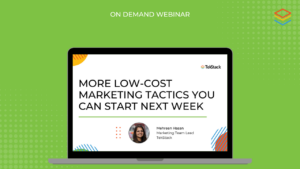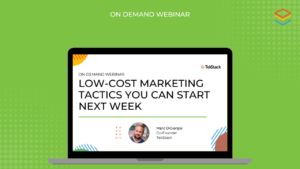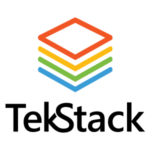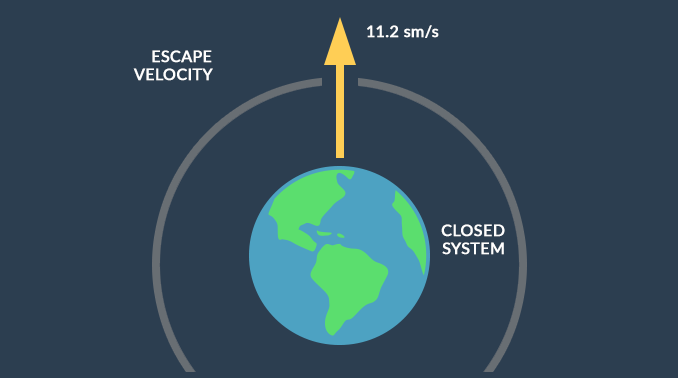
Let me jump right to the punchline, the answer is YES! Every software company, including yours, should care more about Revenue Operations, or “RevOps”. Specifically, if you want to achieve escape velocity. Ask these questions:
- Are you investing more than 10% of your revenue in sales & marketing? AND
- Do you have a product-market fit as evidenced by an ability to build a funnel, add customers, and deploy without significant custom development? AND
- Do you have a desire to increase your company’s valuation by improving deal gross margin or ARR?
If so, then the answer is a clear yes. In fact, there is actually a good chance you are already performing RevOps functions if you have:
- Taken a crack at defining key processes in sales, marketing, and customer success
- Invested in tools like CRM or marketing automation (amongst others)
- Looked at data like forecasts and funnel reports
- Provided training or learning tools to your team.
This is essentially what Revenue Operations is; guiding revenue-related processes, tools, data, and training. However, even if you are doing these things, it may not mean that your efforts are organized into a single function, rather they may be distributed across key players in various teams, or limited by your access to key metrics, activities, or ability to influence behaviors.
In this article, we’ll talk about ways to make your existing investment more effective and coordinated. And at which point in your company’s journey you should start to consider switching from a distributed responsibility to a dedicated one.
Looking at the entire customer journey
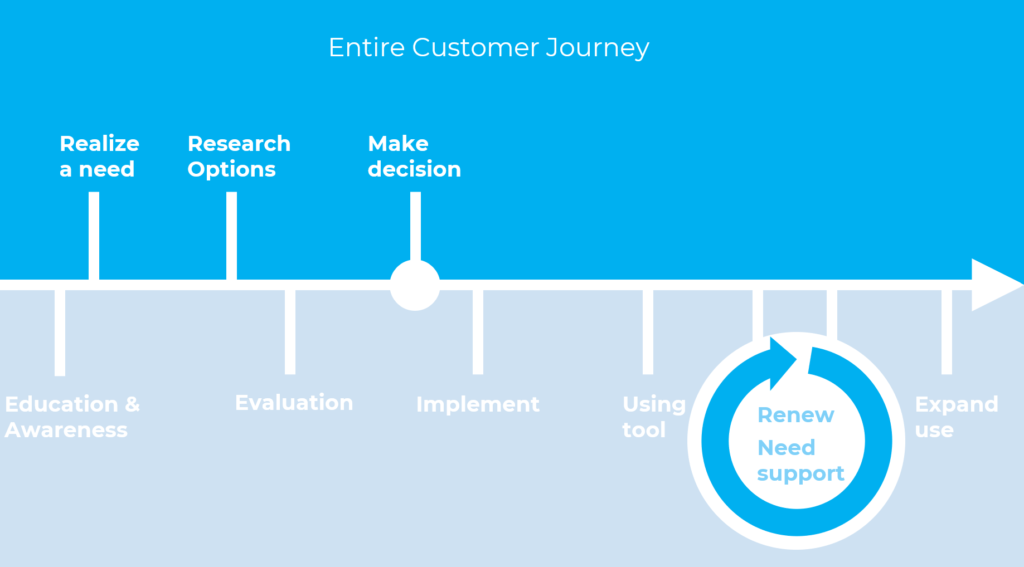
A typical customer journey in B2B SaaS
The entire point of ‘RevOps’ is to integrate all selling and marketing motions together. B2B SaaS companies tend to become siloed functions very quickly, each function in the organization maturing at different points of time and at different speeds. Customer relationships move from one department to the next in a sequence.
Now, this evolution is not entirely avoidable, but for the sake of your customer’s experience, there should be an effort to make the transitions as smooth as possible and built in a customer-centric way. It’s likely each of your departments (marketing, sales, services, support, finance, customer success) have their own processes to support their own function which often grows up without much consideration for the customer’s experience, or for how the information will be used in other departments.
The gulf is widened with the adoption of function-specific tools that don’t integrate, or whose licensing costs prohibit the use of the tool across the enterprise.
Why should my company improve Revenue Operations?
A well-oiled RevOps machine could increase ARR bookings by 80% without an increase in sales & marketing investment. How?
Let’s take the example of a $10M SaaS business, below.
Hypothesis: Improving conversion metrics and increasing Top of Funnel (TOFU) results by a meagre 10% will increase ARR bookings by from $1.5M to $2.6M; all achieved without spending an additional dollar in sales & marketing.
How can this be possible?
In the table above, the shaded cells are the metrics we are going to focus on. You can use this worksheet yourself and insert your own key metrics. Download here.
Prioritized Leads
First, what is a Prioritized Lead? Its Forrester’s updated speak for an SQL. Basically, it’s a ‘lead’ that sales should work on. Your company likely has a number of lead sources including marketing, referrals, outbound. I’ll guarantee you that the number could be at least 10% greater if you:
- Increased outbound sales motions
- Reworked previously lost opportunities
- Properly followed up on every inbound lead (timely and with intent)
10% is a very conservative increase in Prioritized Leads for this example. A focus on Revenue Operations will give you the ability to create sales motions, ensure reps are following and sharing best practices, and that the work is being done. Most companies can’t even validate activity levels or ensure the right activity is being done with their market.
Lead Conversion
The Prioritized to Qualified Lead conversion increasing from 50% to 60% can be made possible through:
- Creating better visibility on lead information
- Providing better oversight metrics
- Improving the quality of inbound leads through account-centric lead scoring
Opportunity Conversion
Increasing Qualified Lead to Opportunity Creation from 50 to 60% is reasonable if:
- Better process definition is provided to sales reps
- Providing sales reps templated and automated call follow-ups and discovery questions
Win Rate
Moving from a 25% to 30% win rate is achieved by:
- Focusing efforts on better fit opportunities
- Providing sales reps with better storytelling customer examples
- Providing sales reps with guided training on emotional buying techniques
Net Churn
In this example, the company has decent retention of 90% but net churn is 0% which means they make up for the 10% attrition by selling that amount lost back into their base. You can improve net churn to minus 5% in a number of ways:
- Improving from 90% retention to 93% retention.
- Increasing back-to-base sales from 10% to 12%.
How can a focus on RevOps possibly help with all of this? We’ve run across 100s of SaaS companies and have seen countless implementations of CRM systems, and SOPs for various departments. So I’d say that our opinion is an informed opinion. By far, what we have seen across the majority of growing companies in the following:
- Processes that are only partially documented, not tracked, not enforced, not followed. (Remember, one of the best traits of a successful salesperson is low compliance, which doesn’t always translate well when you need it to wrt your internal processes).
- Reporting that is ‘offline’ – or in a sidecar reporting tool or Excel; that is not readily available, doesn’t drill down, and is overly focused on lagging indicators, not leading indicators.
- Training, not coaching. Sales training tends to be delivered at SKOs, once a year, and not reinforced. Coaching at a micro-level, with consistency, is the key to changing behaviors.
When do you need a dedicated ‘Revenue Operations’ team?
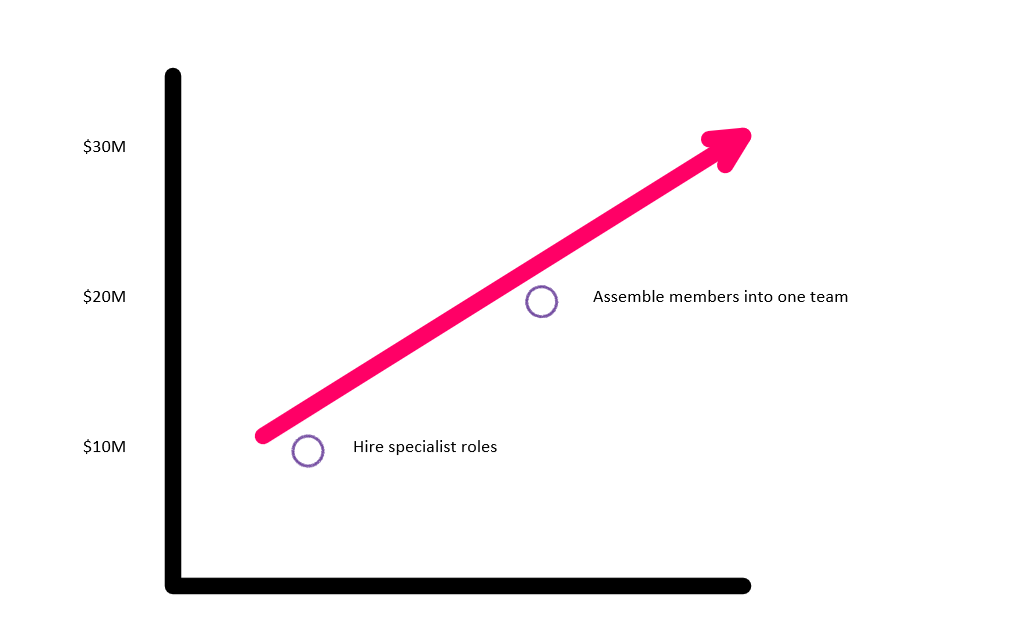
At which point do you move to dedicated vs shared responsibility?
Roughly speaking, here are some guidelines completely unsubstantiated by research, and merely an opinion:
$0-10M Revenue: Do you darned best to put in process and tools for sales and marketing. Do it on the side of your desk.
$10-20M Revenue: Start to hire specialist roles. Sales Operations to monitor data hygiene, process adherence, and provide reporting metrics. Marketing Operations (same but early funnel), Services Operations (same but in services), Data Analyst (write board reports, management reports, look for data insights).
$20-30M Revenue: It’s time to align these specialist hires into one unit, led by a Revenue Operations Manager that reports directly to a ‘CRO’ or equivalent. If you don’t have a CRO that is responsible, for sales, customer success, and marketing; then seriously consider having this role report directly to the CEO.
Where does TekStack help in all of this?
Shameless shill! Basically, for any stage company, we provide all of the processes, tools, and reporting you to need to grow your software company. Instead of piecing together a technology stack across a number of different vendors, we provide everything in an integrated Microsoft platform. This tech stack is supported with business processes, and all the metrics you need to ensure that the team is doing the job. And all the metrics you need to make strategic decisions about the business.
If you want your company to achieve escape velocity but aren’t sure where to start, contact us, we’d love to talk.







